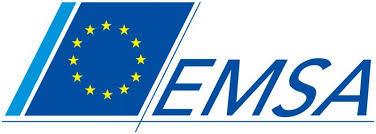
(www.MaritimeCyprus.com) This publication presents statistics on marine casualties and incidents which involved ships flying a flag of one of the EU Member States and occurred within EU Member States’ territorial sea or internal waters as defined in UNCLOS or involved substantial interests of EU Member States, as reported by Member States in the EU database for maritime incidents EMCIP (European Marine Casualty Information Platform).
In this document EU and EU Member States are the 27 EU Member States plus the EEA EFTA States (Iceland and Norway) to which the Directive applies. EU 27 is used explicitly when referring to the 27 EU Member States without the EEA EFTA States. The figures from EMCIP present statistics on marine casualties and incidents that cover the period from 1st of January 2014 to 31st of December 2022, reported by the EU Member States.
2022 has been a positive year considering the reduction or stabilisation of most of the accident indicators, such as the number of occurrences, ships lost, fatalities or injuries. After traffic reduction in 2020, due to COVID pandemic, traffic increased in 2021 and cruise ships and ferries activities started again, reaching pre-COVID levels in 2022.
In 2022, 2,510 marine casualties and incidents were reported, representing a reduction of 182 marine casualties and incidents in comparison with the year 2021 and 84 marine casualties and incidents in comparison with the year 2020.
The total number of marine casualties and incidents reported in the period from 2014 to 2022 was 23,814 with an annual average of 2,646. The number of casualties and incidents is 5.1% under the annual average and under the average of 2,670 occurrences before the pandemic.
After a peak of 106 very serious casualties reported in 2018 and a total of 75 in 2019, the number of very serious marine casualties was 51 in 2020, 58 in 2021 and 44 in 2022, confirming the reduction in the trend.
In 2022, the total number of ships involved in marine casualties and incidents was 2,701, decreasing 212 ships in comparison with 2021 and 94 ships in 2020. This decreasing trend applies to cargo ships and fishing vessels.
To draw objective comparisons between the different ship types, ratios between the number of marine casualties and incidents involving each ship type and its corresponding fleet size were calculated. These ratios are called ship occurrence indicators (see Appendix 4) and show the number of marine casualties and incidents in one year per one thousand ships.
The average ship occurrence indicator in the period from 2014 to 2022 was 115, with a maximum of 125 in 2019, a minimum of 101 in 2020 and 109 in 2022. Both passenger ships and cargo ships had the greater average ship occurrence indicators, 211 and 152 respectively. Indicators in 2022 are stabilised in comparison with the previous year.
Regarding service ships, this category had the lowest indicator, with an average of 44 over the period from 2014 to 2022. Finally, the occurrence indicator about fishing vessels was 51 with an increase over the period from 2014 to 2022.
From 2014 to 2022, ‘internal waters (port area and other)’ were the locations where more than half of the reported marine casualties and incidents took place, followed by ‘Territorial sea’ and ‘Open sea’. Data for 2022 present the same trends than data for the whole period from 2014 to 2022.
From 2014 to 2022, 45.3% of the marine casualties and incidents took place while in port area, i.e., in departure, arrival and anchored or alongside, whereas the ‘En route (mid-water or transit)’ segment accounted for 44.0%.
Finally, 10.7% of the marine casualties and incidents happened in ‘Unknown’ voyage segments. EU waters in North Atlantic, with an average of 22.4% of the marine casualties and incidents, and EU waters in Mediterranean Sea, with an average of 18.0% of the marine casualties and incidents, were the geographical areas with the higher number of occurrences, with the exception of passenger ships where the greater number of occurrences in EU waters happened in the Mediterranean and Baltic Sea.
For even more information, click on below image to download full EMSA report (66p).
Source: EMSA















